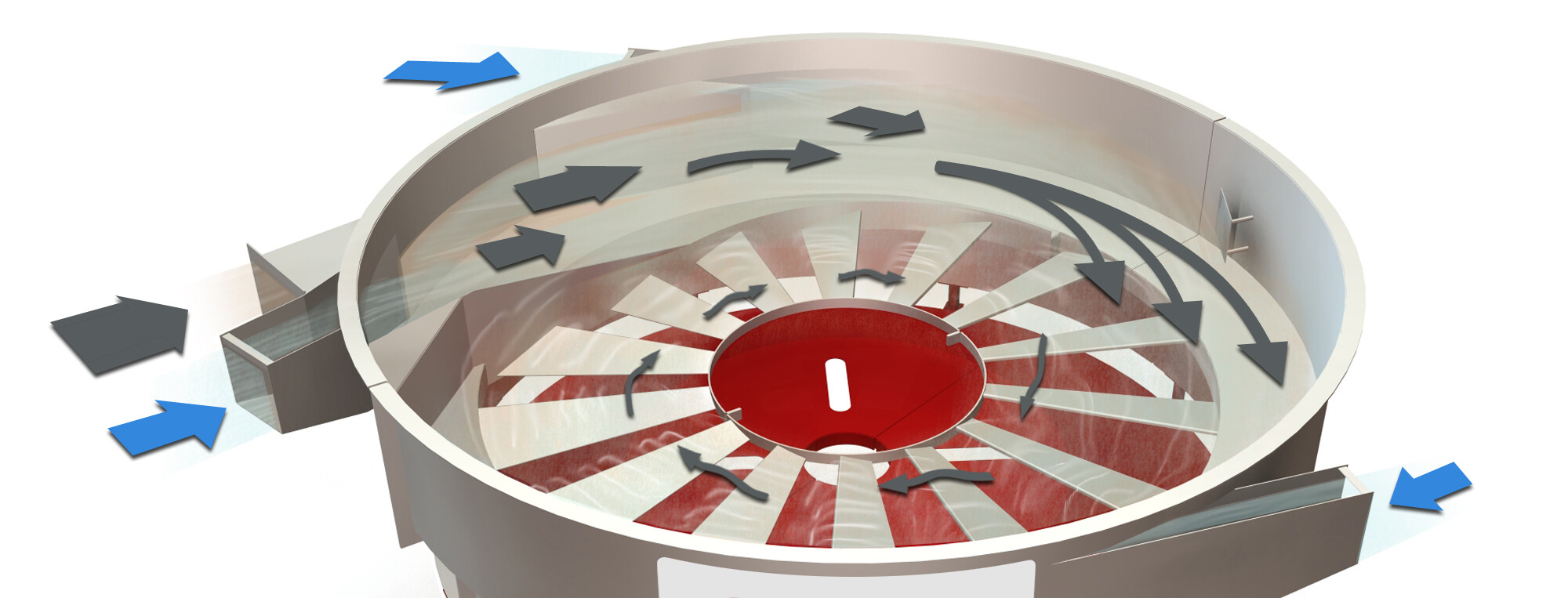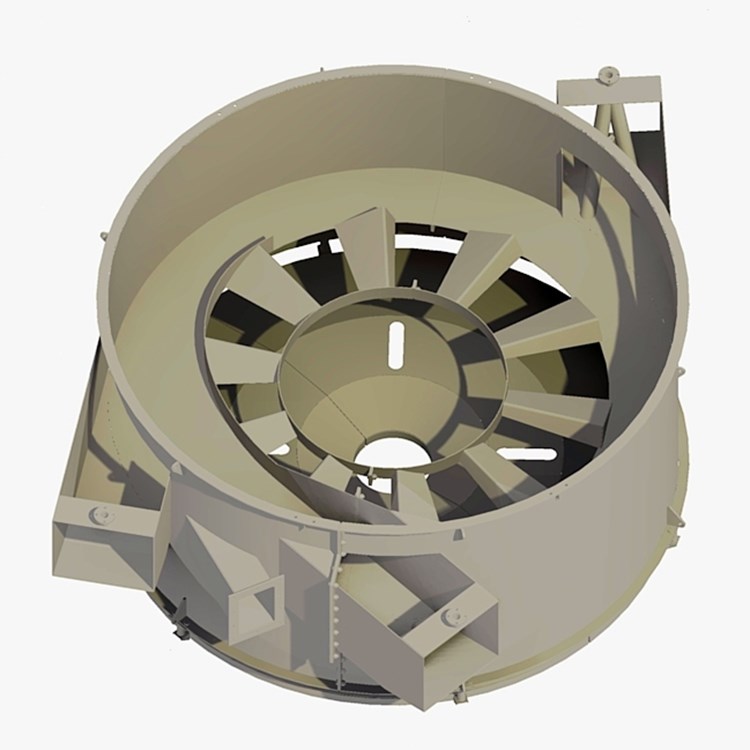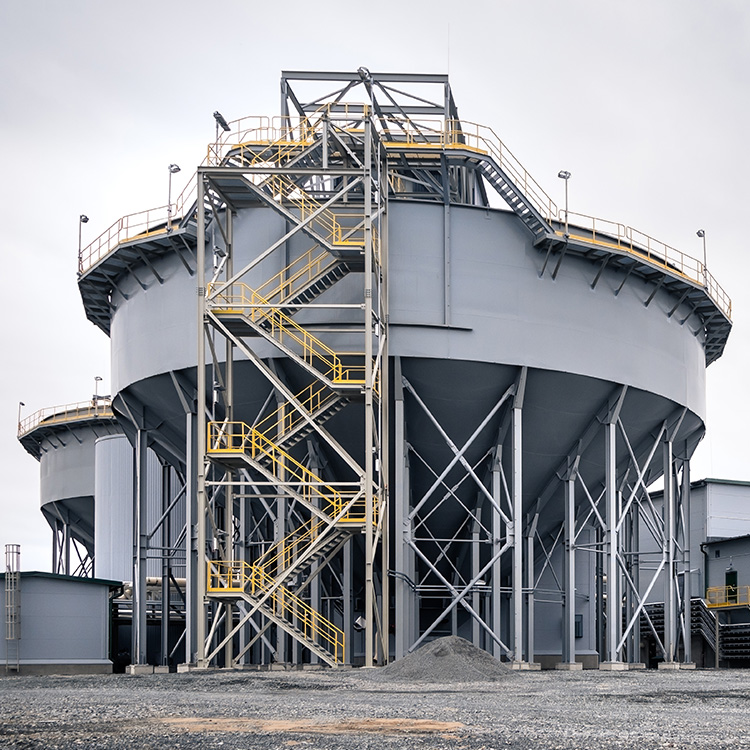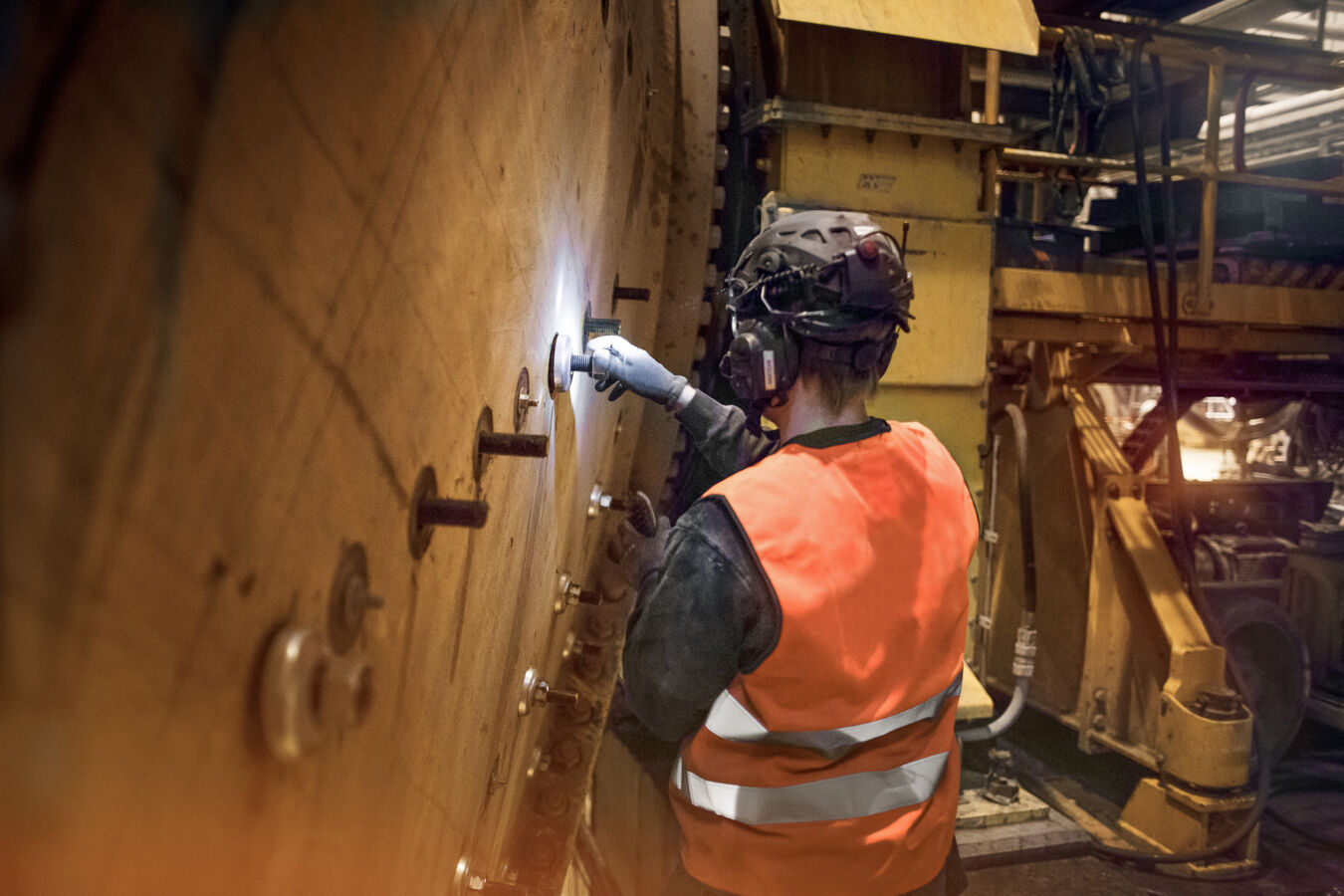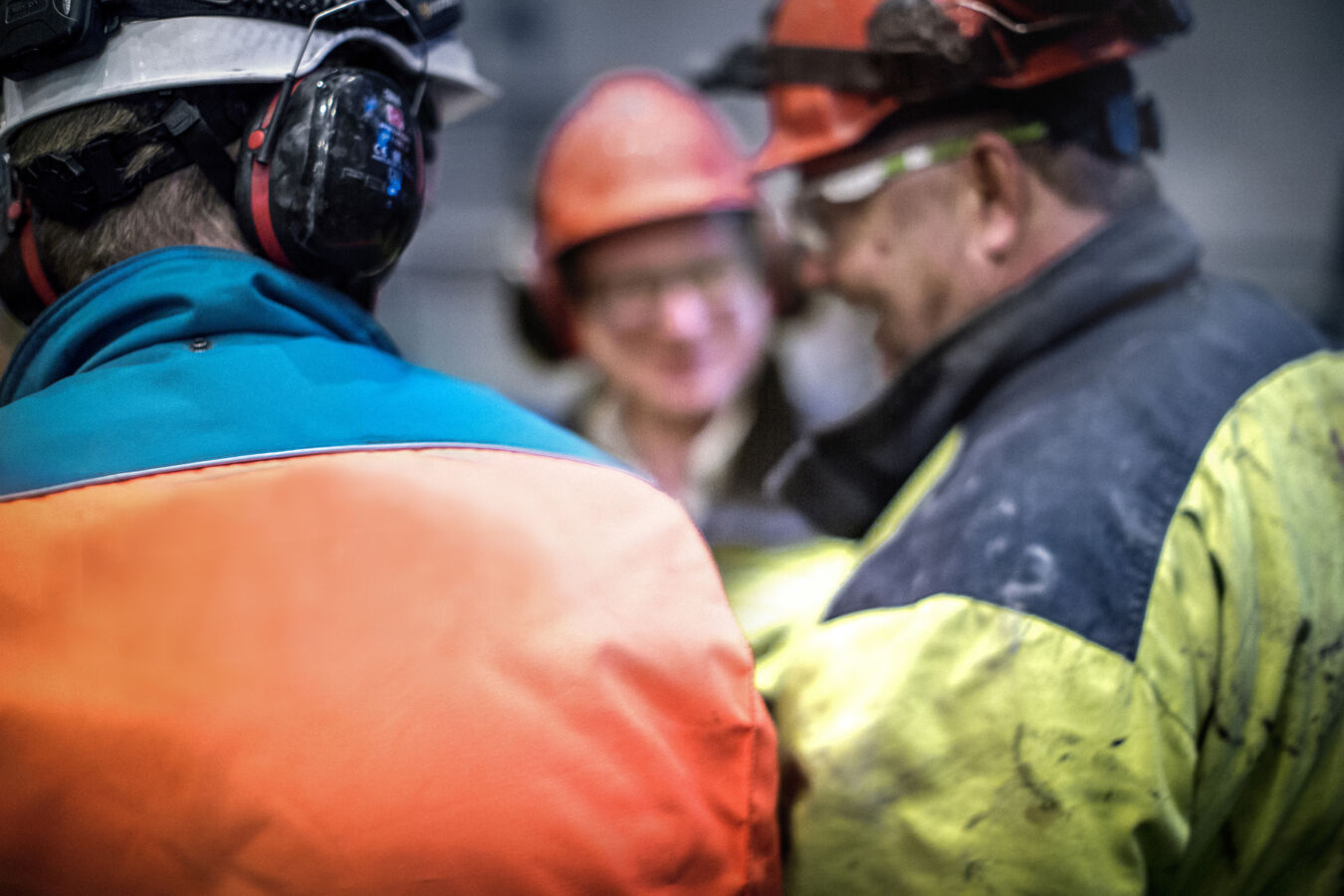The Vane Feedwell is the result of many years of internal research and rigorous site test work, followed by CSIRO CFD analysis. It is a cutting-edge design and the first major innovation in the thickening industry since self-diluting systems such as Metso’s AutodilTM were introduced.
Applications
The Vane Feedwell is a high-performance feedwell for the thickening and clarifying industry. The Vane Feedwell has also been successfully retrofitted, quickly showing significant benefits in thickener performance. It is now the global standard for all Metso thickeners.
How does the Vane Feedwell work?
Metso’s thickener Vane Feedwell incorporates a total of seven global patents into its unique design. One of the main design features is the interconnected upper and lower zones.
The upper zone, into which feed, dilution water, and flocculant are added, provides enhanced mixing and energy dissipation. This maximizes flocculant adsorption, eliminates the possibility of coarse/fines segregation and ensures all particles are aggregated together by the flocculant. Efficient operation is maintained in this upper zone over varying feed rates.
The lower zone promotes gentle mixing for continued aggregate growth, with the option for secondary flocculant dosing. This zone also enables aggregates to uniformly discharge under low shear conditions.
The cutting-edge in-house CFD modeling
The previously rudimentary understanding of feedwell and thickener flow patterns is taken to the next level with advanced Computational Fluid Dynamics (CFD). The Vane FeedwellTM and today’s thickener designs can truly be optimized for individual duties, resulting in enhanced overall performance.
Metso’s highly experienced CFD team can quickly, accurately and cost-effectively produce various design options, with reassurance for full-scale replication. This unique combination of CFD capability, backed by decades of real-life experience, generates cutting-edge customized designs.
A profit maximizer
The Vane FeedwellTM design ensures a highly efficient thickener operation. As a result, cost savings can be significant.
